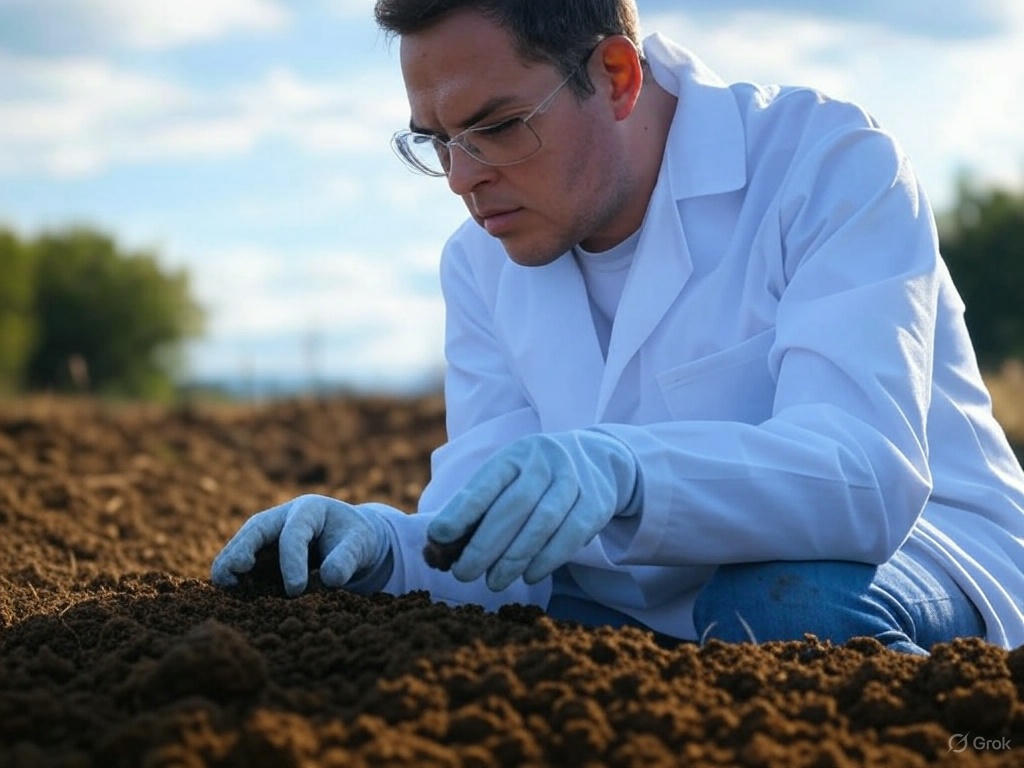Understanding Environmental Science & Climate Change: A Comprehensive Guide to Action
Introduction
Our planet is experiencing profound changes. The evidence is all around us—from shifting weather patterns and rising seas to declining biodiversity and deteriorating air quality. To understand these changes and work toward solutions, we need to understand two interconnected areas: environmental science and climate change.
This guide aims to provide you with a deeper understanding of these critical fields, the challenges we face, and most importantly, the actions we can take—both individually and collectively—to create a more sustainable future. By understanding the science behind environmental changes, we can make informed decisions and take meaningful steps toward addressing one of the greatest challenges of our time.
The Foundation: What is Environmental Science?
Environmental science is much more than simply studying nature. It’s a rich, multidisciplinary field that integrates knowledge from various scientific disciplines to understand how the natural world works and how humans interact with it.
A Convergence of Disciplines
Think of environmental science as a mosaic made up of many different pieces. Each piece represents a different scientific discipline:
- Biology helps us understand ecosystems, biodiversity, and how living organisms interact with their environment.
- Chemistry reveals how pollutants form, spread, and affect natural systems.
- Geology examines the Earth’s physical structure and processes, helping us understand issues like soil erosion and mineral resource depletion.
- Atmospheric science studies the atmosphere, weather patterns, and climate systems.
- Hydrology focuses on water resources, quality, and movement.
- Ecology examines relationships between organisms and their environment.
- Physics helps us understand energy flows, radiation, and physical processes in the environment.
- Social sciences provide insights into human behavior, policy development, and economic factors.
This integration of disciplines makes environmental science uniquely positioned to address complex environmental challenges that no single field could tackle alone.
Key Areas of Focus
Environmental science encompasses several major focus areas:
1. Pollution and Environmental Health
Environmental scientists study various forms of pollution—air, water, soil, noise, light, and even heat—to understand their sources, how they spread, and their impacts on human health and ecosystems.
For example, when studying air pollution, environmental scientists might:
- Measure concentrations of various pollutants
- Model how pollutants disperse through the atmosphere
- Assess health impacts on vulnerable populations
- Evaluate the effectiveness of different control strategies
2. Resource Management
This area focuses on how humans use and manage natural resources like forests, fisheries, minerals, and freshwater. The goal is to find sustainable approaches that meet human needs without depleting resources for future generations.
For instance, in forestry management, environmental scientists might:
- Determine sustainable harvest rates
- Study forest regeneration after different harvesting methods
- Evaluate the impact of harvesting on wildlife habitats
- Develop strategies to protect forests from pests and diseases
3. Conservation Biology
Conservation biology aims to protect biodiversity and prevent species extinction. This involves studying threatened species, habitat preservation, restoration ecology, and creating protected areas.
Conservation biologists might:
- Conduct biodiversity surveys to identify species at risk
- Design wildlife corridors to connect fragmented habitats
- Develop breeding programs for endangered species
- Create management plans for protected areas
4. Environmental Policy and Management
This area bridges science and governance, focusing on how scientific knowledge can inform policies and management practices. It involves understanding regulatory frameworks, cost-benefit analysis, and stakeholder engagement.
Environmental policy experts might:
- Evaluate the effectiveness of existing regulations
- Conduct environmental impact assessments for proposed projects
- Develop incentive programs for sustainable practices
- Facilitate community involvement in environmental decision-making
5. Climate Science
Climate science has become a crucial component of environmental science, focusing on understanding past, present, and future climate patterns and the factors that influence them.
Climate scientists might:
- Analyze ice cores to understand historical climate patterns
- Develop models to project future climate scenarios
- Study the carbon cycle and other biogeochemical cycles
- Monitor current climate indicators like temperature and precipitation patterns
Environmental Science in Practice
Environmental science isn’t just theoretical—it has practical applications that affect our daily lives:
- Environmental monitoring tracks pollution levels, water quality, and ecosystem health, providing early warnings of problems.
- Environmental impact assessments evaluate the potential effects of proposed projects like dams, highways, or housing developments.
- Remediation strategies help clean up contaminated sites and restore damaged ecosystems.
- Sustainability initiatives develop more environmentally friendly approaches to energy, agriculture, transportation, and manufacturing.
By bridging the gap between scientific understanding and practical solutions, environmental science provides the foundation for addressing our most pressing environmental challenges—including climate change.
Understanding Climate Change: The Science Behind the Headlines
Climate change has become a topic of daily news and political debate, but the scientific foundations are often oversimplified or misunderstood. Let’s explore what climate change actually is, how we know it’s happening, and why it matters.
The Climate System: A Delicate Balance
To understand climate change, we first need to understand the climate system itself. Earth’s climate is an incredibly complex system involving interactions between:
- The atmosphere (the gases surrounding Earth)
- The hydrosphere (all of Earth’s water)
- The cryosphere (frozen water in ice sheets, glaciers, and sea ice)
- The biosphere (all living organisms)
- The lithosphere (Earth’s soil and rock)
These components interact through various physical, chemical, and biological processes, creating the conditions that make Earth habitable for life.
One of the most important processes is the greenhouse effect—a natural phenomenon that’s essential for life on Earth. Here’s how it works:
- The sun emits energy that reaches Earth as visible light and other forms of radiation.
- About 30% of this energy is reflected back to space by clouds, atmospheric particles, and bright surfaces like snow and ice.
- The remaining energy is absorbed by the Earth’s surface, warming it.
- The warmed surface emits infrared radiation (heat).
- Greenhouse gases in the atmosphere—including carbon dioxide (CO₂), methane (CH₄), nitrous oxide (N₂O), and water vapor—absorb some of this heat and radiate it in all directions, including back toward Earth’s surface.
- This trapped heat keeps Earth’s average temperature at about 15°C (59°F) rather than -18°C (0°F), which would be too cold for most life as we know it.
The greenhouse effect is a bit like a blanket that keeps Earth warm. Without it, our planet would be much colder. However, human activities are now enhancing this natural effect, adding extra “blankets” that are trapping more heat than the Earth’s systems are adapted to handle.
The Human Influence: How We’re Changing the Climate
The current climate change we’re experiencing is primarily driven by human activities that increase the concentration of greenhouse gases in the atmosphere, enhancing the greenhouse effect and raising global temperatures.
Major Human Contributions to Climate Change
1. Burning Fossil Fuels
When we burn coal, oil, and natural gas for electricity, transportation, and industrial processes, we release carbon dioxide that has been stored underground for millions of years. Consider these facts:
- Global CO₂ emissions from fossil fuels have increased from about 5 billion tons per year in 1950 to over 36 billion tons today.
- A single passenger vehicle emits about 4.6 metric tons of CO₂ per year.
- Electricity generation is the largest source of greenhouse gas emissions in many developed countries.
2. Deforestation and Land Use Changes
Forests act as “carbon sinks,” absorbing CO₂ from the atmosphere. When forests are cleared:
- The stored carbon is released back into the atmosphere as CO₂.
- We lose future carbon sequestration that those trees would have provided.
- Other ecosystem services like water regulation and habitat provision are diminished.
Approximately 12 million hectares of forest are lost annually—equivalent to 30 football fields every minute.
3. Industrial Processes
Various industrial processes release greenhouse gases:
- Cement production releases CO₂ as a byproduct of chemical reactions.
- Some manufacturing processes produce hydrofluorocarbons (HFCs) and other potent greenhouse gases.
- Waste decomposition in landfills produces methane, which is 25 times more potent as a greenhouse gas than CO₂ over a 100-year period.
4. Agriculture
Modern agriculture contributes significantly to climate change through:
- Methane emissions from livestock digestion and manure management
- Nitrous oxide emissions from fertilizer use
- CO₂ emissions from farm machinery and transport
- Forest clearing for agricultural expansion
Agriculture accounts for about 24% of global greenhouse gas emissions, making it a crucial area for mitigation efforts.
The Evidence: How We Know Climate Change is Happening
The scientific evidence for climate change comes from multiple independent lines of research, creating an overwhelming body of evidence. Here are some of the key indicators:
1. Rising Global Temperatures
Global temperature records show a clear warming trend:
- The global average temperature has increased by about 1.1°C (2.0°F) since the pre-industrial period (1850-1900).
- The past decade (2011-2020) was the warmest on record.
- Each of the last four decades has been successively warmer than any decade that preceded it since 1850.
This warming isn’t uniform—some regions are warming faster than others. The Arctic, for example, is warming at more than twice the global average rate, a phenomenon known as “Arctic amplification.”
2. Changes in the Cryosphere
The Earth’s frozen regions are changing dramatically:
- Arctic sea ice extent has declined by about 13% per decade since satellite measurements began in 1979.
- Greenland and Antarctica are losing ice mass at accelerating rates.
- Mountain glaciers are retreating worldwide, with many smaller glaciers expected to disappear entirely within decades.
- Permafrost (permanently frozen ground) is thawing, releasing stored carbon and methane.
These changes not only indicate warming but also amplify it through feedback loops. For example, as ice melts, it exposes darker surfaces that absorb more solar energy, leading to more warming and more melting.
3. Ocean Changes
The oceans have absorbed more than 90% of the excess heat from global warming, leading to:
- Increasing ocean temperatures, with the upper 75 meters warming by about 0.11°C per decade since 1971
- Rising sea levels (about 3.3 mm per year since the early 1990s)
- Ocean acidification, as the water absorbs CO₂ from the atmosphere
- Changes in ocean currents and circulation patterns
Ocean changes affect marine ecosystems, coastal communities, and global weather patterns.
4. Ecological Indicators
Plants and animals are responding to climate change in observable ways:
- Shifts in the timing of seasonal events (phenology), such as earlier flowering of plants and migration of birds
- Changes in species distributions, with many species moving poleward or to higher elevations
- Alterations in ecosystem structure and function
- Increased extinction risk for species that cannot adapt quickly enough
These biological responses provide independent confirmation of climate change beyond temperature measurements.
5. Extreme Weather Events
While no single weather event can be attributed solely to climate change, the patterns of extreme weather are changing in ways consistent with scientific predictions:
- Heat waves are becoming more frequent and intense.
- Heavy precipitation events are increasing in many regions.
- Drought conditions are worsening in some areas.
- Tropical cyclones may be becoming more intense.
Attribution science—a relatively new field—can now estimate how much climate change has influenced the likelihood or intensity of specific extreme events.
6. Paleoclimate Evidence
By studying ice cores, tree rings, coral reefs, and sediment layers, scientists can reconstruct past climate conditions, revealing that:
- Current CO₂ levels are higher than at any point in at least 800,000 years.
- The rate of warming is much faster than previous natural climate changes.
- Past periods with CO₂ levels similar to today were much warmer and had higher sea levels.
This historical perspective helps scientists understand natural climate variability and distinguish it from human-caused changes.
Climate Models and Projections
Scientists use sophisticated computer models to understand how the climate system works and project future changes. These models:
- Divide the Earth into three-dimensional grid cells
- Apply physical laws of thermodynamics, fluid dynamics, and radiative transfer
- Incorporate processes like cloud formation, ocean circulation, and carbon cycling
- Run simulations under different greenhouse gas emission scenarios
While models have uncertainties, they’ve successfully reproduced past climate changes and continue to improve. They provide our best tool for understanding potential future climate states and guiding mitigation efforts.
Current projections suggest that without significant emissions reductions, global temperatures could rise by 2.5-4.5°C (4.5-8.1°F) by 2100 compared to pre-industrial levels, with serious consequences for human and natural systems.
The Consequences: Why Climate Change Matters
Climate change isn’t just about rising temperatures—it has far-reaching consequences for natural systems and human societies. Understanding these impacts helps us grasp the urgency of addressing this challenge.
Physical Systems
Rising Sea Levels
As water warms, it expands. Combined with melting ice from glaciers and ice sheets, this thermal expansion is causing sea levels to rise:
- Global sea levels have risen about 20 cm (8 inches) since 1880.
- The rate of sea level rise has accelerated and is now about 3.7 mm per year.
- Projections suggest sea levels could rise 30-100 cm (1-3.3 feet) or more by 2100, depending on emissions scenarios.
This puts coastal communities at risk from:
- Increased coastal flooding during storms
- Permanent inundation of low-lying areas
- Saltwater intrusion into freshwater supplies
- Accelerated coastal erosion
Cities like Miami, Jakarta, Bangkok, and Amsterdam are already dealing with these challenges, implementing costly flood protection measures and, in some cases, planning managed retreats from the most vulnerable areas.
Extreme Weather Events
Climate change is altering the frequency, intensity, duration, and timing of extreme weather events:
Heat waves: Longer, more frequent, and more intense heat waves affect human health, infrastructure, and ecosystems. The 2003 European heat wave caused an estimated 70,000 excess deaths.
Droughts: Changing precipitation patterns and increased evaporation are intensifying droughts in many regions. The recent multi-year drought in California (2012-2016) was the state’s worst in 1,200 years.
Heavy precipitation: Warmer air holds more moisture, leading to more intense rainfall events. These can cause flash flooding, urban flooding, and landslides.
Tropical cyclones: While the frequency of tropical cyclones may not change significantly, their intensity is likely to increase, with stronger winds and heavier rainfall. Hurricane Harvey (2017) dropped unprecedented rainfall on Houston, with climate change estimated to have increased the rainfall amount by about 15%.
Wildfire conditions: Hotter temperatures, earlier snowmelt, and changing precipitation patterns create conditions conducive to larger, more frequent wildfires in many regions. The 2019-2020 Australian bushfire season and recent California fire seasons demonstrate these trends.
These extreme events often interact with each other, creating compound hazards. For example, droughts can increase wildfire risk, and heavy rains following wildfires can trigger landslides in burn areas.
Ecological Systems
Ecosystems and Biodiversity
Climate change is affecting ecosystems worldwide:
Range shifts: Many species are moving poleward or to higher elevations as their traditional habitats become unsuitable. However, not all species can move quickly enough, and barriers like roads, cities, and agricultural areas may block migration.
Phenological changes: The timing of seasonal events is shifting, such as earlier flowering of plants, earlier arrival of migratory birds, and changes in insect emergence. These shifts can disrupt ecological relationships if interdependent species respond differently.
Coral reef bleaching: Warming ocean temperatures cause coral bleaching, where corals expel the symbiotic algae that provide their food and color. Severe or prolonged bleaching events can kill corals, dramatically altering reef ecosystems that support thousands of species.
Extinction risk: The Intergovernmental Panel on Climate Change (IPCC) estimates that 20-30% of plant and animal species assessed so far are at increased risk of extinction if global warming exceeds 1.5-2.5°C above pre-industrial levels.
Ecosystem transformation: Some ecosystems may transform into entirely different types. For example, parts of the Amazon rainforest could potentially convert to savanna if regional climate becomes drier.
Ocean Acidification
As the ocean absorbs CO₂ from the atmosphere, chemical reactions occur that reduce seawater pH, making the ocean more acidic:
- Ocean pH has decreased by about 0.1 units since the beginning of the industrial era, representing a 30% increase in acidity.
- This affects marine organisms that build calcium carbonate shells or skeletons, including corals, mollusks, and certain plankton.
- Impacts ripple through marine food webs, potentially affecting fisheries and food security.
Ocean acidification is sometimes called “climate change’s evil twin” because it stems from the same root cause—rising atmospheric CO₂—but represents a separate threat to marine ecosystems.
Human Systems
Food Security
Agriculture is highly sensitive to climate conditions, and climate change affects food production in multiple ways:
Crop yields: Higher temperatures can reduce yields of major crops like wheat, rice, and maize, particularly in tropical and subtropical regions. While CO₂ fertilization may boost some plant growth, the overall impact on nutrition is complex and often negative.
Water availability: Changing precipitation patterns and increased evaporation affect irrigation water availability.
Extreme events: Droughts, floods, and heat waves can devastate harvests.
Pests and diseases: Warming temperatures are allowing agricultural pests and diseases to expand into new regions.
Marine fisheries: Ocean warming and acidification affect fisheries, which provide the primary source of protein for billions of people.
These impacts are not distributed equally. Many regions already facing food insecurity—particularly in sub-Saharan Africa and South Asia—are projected to experience the most negative effects on agricultural productivity.
Water Resources
Climate change alters the water cycle, affecting water availability and quality:
Changing precipitation patterns: Some regions are receiving more rainfall while others experience less, and the timing of precipitation is shifting.
Snowpack and glaciers: Many regions depend on meltwater from snowpack or glaciers for their water supply, especially during dry seasons. As these sources diminish, water security is threatened.
Water quality: Warmer water temperatures, combined with runoff from more intense rainfall events, can worsen water quality problems like algal blooms and reduce dissolved oxygen levels.
Groundwater recharge: Changes in precipitation and increased evaporation can reduce the replenishment of groundwater aquifers.
These changes exacerbate existing water management challenges and can intensify competition for water resources between agricultural, industrial, and municipal users.
Human Health
Climate change affects human health through various pathways:
Heat-related illness and death: Extreme heat events cause heat stroke, heat exhaustion, and can exacerbate cardiovascular and respiratory conditions.
Air quality: Higher temperatures increase ground-level ozone formation and can worsen air pollution. Longer pollen seasons and changing pollen distribution affect allergies and asthma.
Vector-borne diseases: Warming temperatures are allowing disease vectors like mosquitoes, ticks, and flies to expand their ranges, potentially exposing more people to diseases like malaria, dengue fever, and Lyme disease.
Water-related illnesses: Changes in precipitation and flooding can increase exposure to waterborne pathogens and contaminants.
Mental health impacts: Extreme weather events, displacement, and concerns about climate change contribute to anxiety, depression, and post-traumatic stress.
Vulnerable populations—including children, the elderly, those with pre-existing conditions, outdoor workers, and low-income communities—often face the greatest health risks from climate change.
Economic Impacts
The economic costs of climate change are substantial and growing:
Infrastructure damage: Extreme weather events, sea level rise, and other climate impacts damage buildings, transportation systems, energy infrastructure, and other critical systems.
Productivity losses: Extreme heat reduces labor productivity, particularly for outdoor workers. One study estimates that by 2030, the equivalent of more than 80 million full-time jobs could be lost due to heat stress.
Agricultural losses: Reduced crop yields and livestock productivity translate to economic losses for farmers and higher food prices for consumers.
Health costs: Climate-related illnesses increase healthcare costs and reduce workforce productivity.
Adaptation expenses: Communities must invest in adaptation measures like sea walls, water management systems, and heat-resistant infrastructure.
Estimates of the global economic costs of climate change vary widely but generally increase dramatically with higher levels of warming. The longer we delay action, the more expensive both the impacts and the solutions become.
Social and Political Stability
Climate change can act as a “threat multiplier,” exacerbating existing social and political tensions:
Migration and displacement: Climate impacts like sea level rise, drought, and extreme weather contribute to both temporary displacement and permanent migration. The World Bank estimates that without action, over 140 million people could be internally displaced by climate change in sub-Saharan Africa, South Asia, and Latin America by 2050.
Resource competition: Reduced availability of water, arable land, and other resources can intensify competition and conflict between groups.
Food price volatility: Climate-related agricultural disruptions can cause food price spikes, which have historically been associated with social unrest and political instability.
National security: Military and security experts increasingly recognize climate change as a security issue that can contribute to instability, conflict, and terrorism in vulnerable regions.
These interconnected impacts highlight why climate change isn’t just an environmental issue—it’s a comprehensive challenge with implications for virtually every aspect of human society.
Taking Action: Solutions to Climate Change
Despite the severity of the climate challenge, there are many effective solutions available. Addressing climate change requires a two-pronged approach:
- Mitigation: Reducing greenhouse gas emissions to limit the magnitude of climate change
- Adaptation: Adjusting to actual or expected climate effects to reduce harm or exploit beneficial opportunities
Both are essential, as even with ambitious mitigation efforts, some climate change is already locked in due to past emissions.
Individual Actions: Making a Personal Difference
While systemic changes are necessary, individual actions still matter. They reduce your personal carbon footprint, demonstrate commitment to potential solutions, and can inspire others. Here are some of the most impactful ways individuals can contribute:
Home Energy Use
The energy used in our homes is a significant source of emissions:
Energy efficiency: Upgrading to energy-efficient appliances, improving insulation, using programmable thermostats, and switching to LED lighting can significantly reduce energy consumption. An ENERGY STAR certified refrigerator uses about 9% less energy than models meeting minimum federal standards.
Renewable energy: Installing solar panels or subscribing to renewable energy through your utility can reduce or eliminate emissions from electricity. The cost of solar panels has fallen by more than 70% since 2010, making this option increasingly accessible.
Conscious consumption: Using less hot water, air-drying clothes, unplugging electronics when not in use, and being mindful of heating and cooling settings all reduce energy demand.
Transportation
Transportation is often the largest component of an individual’s carbon footprint:
Drive less: Walking, cycling, carpooling, or using public transportation reduces emissions and often provides health benefits. If everyone in a city like Los Angeles who commutes by car alone just one day per week found an alternative, it would eliminate about 1,000 tons of CO₂ daily.
Electric vehicles: When it’s time for a new car, consider an electric vehicle (EV). Over their lifetime, EVs typically produce far fewer emissions than conventional vehicles, especially as electricity generation becomes cleaner.
Efficient driving: If you must drive, maintaining your vehicle, avoiding rapid acceleration and braking, and removing excess weight can improve fuel efficiency.
Air travel: Air travel generates significant emissions per passenger. Consider alternatives like trains for shorter trips, combine purposes for necessary flights, and explore carbon offset programs for unavoidable air travel.
Food Choices
Our food systems account for about one-quarter of global greenhouse gas emissions:
Reduce food waste: About one-third of all food produced globally is wasted. Planning meals, storing food properly, and using leftovers can reduce this waste and its associated emissions.
Plant-rich diet: Reducing consumption of animal products, particularly beef and lamb, can substantially lower your dietary carbon footprint. Plant-based proteins like beans, lentils, and tofu have much lower emissions.
Local and seasonal foods: When possible, choose local and seasonal foods to reduce transportation emissions and support local agriculture.
Sustainable farming practices: Support farmers who use sustainable practices like organic farming, regenerative agriculture, and reduced tillage, which can help sequester carbon in soils.
Consumption and Waste
The products we buy have embedded carbon emissions from their production, transportation, and eventual disposal:
Buy less, choose well: Prioritize durable, high-quality items over disposable products. Consider whether purchases are necessary and explore sharing, renting, or buying used items.
Circular economy: Support companies practicing circular economy principles, where products are designed for reuse, repair, and recycling.
Reduce, reuse, recycle: Follow the waste hierarchy, with reduction as the highest priority, followed by reuse and then recycling.
Compost organic waste: Composting food scraps and yard waste keeps these materials out of landfills, where they would generate methane, and creates valuable soil amendments.
Advocacy and Community Engagement
Your influence extends beyond your personal carbon footprint:
Engage with others: Discuss climate change with friends, family, and colleagues. Research shows that social norms are powerful motivators for behavior change.
Support climate-friendly businesses: Choose companies with strong climate commitments and sustainable practices.
Community initiatives: Participate in or initiate local climate action groups, community solar projects, or urban gardening programs.
Political engagement: Vote for candidates with strong climate policies, contact elected officials about climate issues, and support organizations advocating for climate action.
Remember that perfect shouldn’t be the enemy of good—every action helps, and beginning with changes that fit your lifestyle and values makes sustained engagement more likely.
Systemic Solutions: Transforming Our Economy and Society
While individual actions are important, addressing climate change ultimately requires transformative change at the systemic level. Here are key areas for large-scale solutions:
Energy Transition
Transitioning from fossil fuels to clean energy sources is the foundation of climate mitigation:
Renewable energy expansion: Solar, wind, hydroelectric, geothermal, and other renewable sources need to be rapidly scaled up. Costs have fallen dramatically—solar photovoltaic costs decreased by 82% between 2010 and 2019—making renewables increasingly competitive with fossil fuels.
Energy storage: Advancements in battery technology and other storage solutions help address the intermittency of some renewable sources, enabling a more reliable clean energy grid.
Grid modernization: Upgrading transmission infrastructure and creating smart grids can improve efficiency, reliability, and the integration of renewable energy.
Electrification: Transitioning end uses like transportation, building heating, and industrial processes from direct fossil fuel use to electricity allows them to benefit from an increasingly clean grid.
Energy efficiency: Improvements in energy efficiency reduce overall demand, making the transition to renewables more feasible and cost-effective.
Transportation Systems
Reimagining how we move people and goods is crucial for reducing emissions:
Public transportation: Expanding and improving public transit systems reduces the need for personal vehicles and decreases congestion.
Active transportation infrastructure: Creating safe, convenient networks for walking and cycling encourages zero-emission mobility for shorter trips.
Vehicle electrification: Transitioning to electric vehicles for personal transportation, public transit, and commercial fleets eliminates direct emissions from vehicle operation.
Urban planning: Designing compact, mixed-use communities where daily needs are accessible without a car can dramatically reduce transportation emissions.
Freight optimization: Improving logistics, shifting freight to more efficient modes like rail, and developing electric and hydrogen options for heavy-duty vehicles and shipping.
Buildings and Infrastructure
Buildings account for a significant portion of energy use and emissions:
Zero-carbon buildings: Designing new buildings to use minimal energy and generate renewable energy on-site.
Building retrofits: Upgrading existing buildings with better insulation, efficient systems, and renewable energy sources.
Embodied carbon: Addressing the emissions associated with building materials through alternatives like mass timber, low-carbon concrete, and recycled materials.
Climate-resilient infrastructure: Designing infrastructure to withstand climate impacts while minimizing emissions from construction and operation.
Industrial Processes
Industry presents unique decarbonization challenges but also opportunities for innovation:
Process efficiency: Improving energy efficiency in industrial processes through better design, waste heat recovery, and automation.
Material efficiency: Using materials more efficiently, increasing recycling, and designing products for durability and reuse.
Alternative processes: Developing new manufacturing processes with lower emissions, such as hydrogen-based steel production.
Carbon capture: For hard-to-decarbonize industries like cement production, carbon capture technologies can prevent emissions from entering the atmosphere.
Food and Agriculture
Transforming our food systems offers significant climate benefits:
Sustainable agricultural practices: Methods like conservation tillage, cover cropping, and agroforestry can reduce emissions and sequester carbon in soils.
Precision agriculture: Using technology to optimize fertilizer application and irrigation reduces resource use and related emissions.
Alternative proteins: Scaling up plant-based proteins and developing cultivated meat technologies to reduce emissions from animal agriculture.
Food waste reduction: Implementing systems to prevent food waste across the supply chain, from farms to households.
Forest and Land Management
Forests and other ecosystems are natural carbon sinks:
Avoided deforestation: Protecting existing forests prevents the carbon they store from being released.
Reforestation and afforestation: Planting trees in previously forested areas and establishing new forests where appropriate.
Improved forest management: Practices like longer harvest cycles and reduced-impact logging can increase carbon storage in managed forests.
Wetland and peatland protection: These ecosystems store disproportionately large amounts of carbon and must be protected from drainage and destruction.
Policy and Economic Instruments
The right policies can accelerate all of the above solutions:
Carbon pricing: Putting a price on carbon emissions through taxes or cap-and-trade systems creates economic incentives for emissions reductions. Currently, about 40 countries and over 20 subnational jurisdictions have implemented some form of carbon pricing.
Renewable energy standards: Requiring utilities to generate a certain percentage of electricity from renewable sources drives clean energy deployment.
Efficiency standards: Mandating energy efficiency levels for vehicles, appliances, and buildings pushes technology improvement and market transformation.
Research and development funding: Government support for clean energy R&D helps develop and commercialize new technologies.
Just transition policies: Ensuring that the shift to a low-carbon economy creates good jobs and supports communities currently dependent on fossil fuel industries.
International cooperation: Coordinated global action through frameworks like the Paris Agreement, with strong support for developing nations’ climate efforts.
Innovations in Environmental Science and Climate Solutions
Scientific and technological innovations are expanding our toolkit for addressing climate change:
Advanced Renewable Energy Technologies
Beyond conventional solar panels and wind turbines, researchers are developing next-generation clean energy technologies:
Perovskite solar cells: These promise higher efficiency and lower production costs than traditional silicon solar cells, with the potential for applications like solar windows and flexible panels.
Floating offshore wind: Turbines mounted on floating platforms can access stronger, more consistent winds in deeper waters than fixed-foundation turbines.
Advanced geothermal: New drilling techniques and approaches like enhanced geothermal systems could make this consistent, baseload renewable energy source more widely available.
Marine energy: Technologies that capture energy from waves, tides, and ocean currents are advancing toward commercial viability.
Carbon Removal and Management
Achieving climate goals will likely require not just reducing emissions but actively removing CO₂ from the atmosphere:
Direct air capture (DAC): Technologies that extract CO₂ directly from ambient air. While currently expensive, costs are projected to fall with scale and innovation.
Bioenergy with carbon capture and storage (BECCS): Growing biomass (which naturally absorbs CO₂), using it for energy, and capturing and storing the emissions, resulting in net carbon removal.
Enhanced rock weathering: Accelerating natural processes by which certain minerals absorb CO₂ from the air.
Ocean-based approaches: Methods like ocean alkalinity enhancement that increase the ocean’s natural carbon absorption capacity.
Carbon utilization: Technologies that convert captured CO₂ into useful products like building materials, fuels, or chemicals.
Smart Systems and Digital Technologies
Digital technologies are enhancing our ability to monitor, analyze, and optimize environmental systems:
Internet of Things (IoT) sensors: Networks of connected sensors monitor environmental conditions, energy use, and emissions in real-time.
Artificial intelligence and machine learning: These technologies optimize energy systems, predict environmental changes, and identify patterns in complex data.
Digital twins: Virtual replicas of physical systems allow for simulation and optimization of everything from buildings to entire cities.
Blockchain for environmental applications: Secure, transparent tracking of carbon credits, renewable energy certificates, and supply chain sustainability.
Materials Science Innovations
New materials are enabling more sustainable products and processes:
Advanced battery materials: Innovations in battery chemistry promise higher energy density, faster charging, longer lifespans, and reduced dependence on rare materials.
Sustainable building materials: Alternatives to emissions-intensive concrete and steel, such as cross-laminated timber, algae-based materials, and low-carbon cement formulations.
Biodegradable plastics: Truly compostable alternatives to conventional plastics derived from renewable biomass sources.
Climate Monitoring and Modeling
Better data and models improve our understanding of climate change and inform solutions:
High-resolution Earth observation: Increasingly sophisticated satellites and sensors provide detailed monitoring of everything from forest cover to methane leaks.
Climate attribution science: Advancing methodologies for determining the influence of climate change on specific weather events.
Improved climate models: Higher-resolution models with better representation of clouds, ice sheets, and other complex systems provide more accurate projections.
Impact forecasting: Tools that translate climate projections into specific local impacts to guide adaptation planning.
The Path Forward: Integrating Mitigation, Adaptation, and Justice
Effectively addressing climate change requires an integrated approach that combines ambitious mitigation, strategic adaptation, and a commitment to climate justice.
Adaptation Strategies
Even with strong mitigation efforts, some climate impacts are already occurring and will continue:
Coastal protection: Strategies include building sea walls and surge barriers, restoring protective ecosystems like mangroves and wetlands, and in some cases, managed retreat from the most vulnerable areas.
Water management: Adapting water systems through efficiency improvements, water recycling, desalination where appropriate, and watershed restoration.
Heat resilience: Urban cooling through green spaces, reflective surfaces, building design, and ensuring vulnerable populations have access to cooling during extreme heat.
Agricultural adaptation: Developing drought-resistant crop varieties, diversifying crops, improving irrigation efficiency, and adjusting planting times and techniques.
Health systems: Strengthening disease surveillance, heat warning systems, and healthcare capacity to address climate-related health impacts.
Infrastructure resilience: Designing and upgrading infrastructure to withstand more extreme conditions while supporting mitigation goals.
Effective adaptation requires forward-looking planning based on climate projections rather than historical conditions. It also necessitates flexibility to adjust as conditions change and new information becomes available.
Climate Justice and Equity
Climate change raises profound questions of justice and equity:
Disproportionate impacts: Those who have contributed least to greenhouse gas emissions—low-income communities, developing nations, indigenous peoples, and future generations—often face the most severe impacts.
Just transition: Ensuring that climate policies create economic opportunities for all, including workers and communities currently dependent on fossil fuel industries.
Procedural justice: Including all affected communities, particularly marginalized groups, in climate decision-making processes.
International equity: Recognizing the different capacities and historical responsibilities of nations, with developed countries providing financial and technological support to developing countries for climate action.
Centering justice and equity in climate solutions not only addresses moral imperatives but also builds broader, more durable support for climate action.
Building Momentum for Transformative Change
Climate action is gaining momentum globally, creating reasons for cautious optimism:
Declining clean energy costs: The dramatically falling costs of renewable energy and batteries are accelerating the energy transition.
Corporate commitments: Companies representing an increasing share of the global economy are adopting science-based emissions reduction targets.
Financial shifts: Major investors and financial institutions are moving capital from fossil fuels to clean energy and pressuring companies to address climate risks.
Policy progress: While still insufficient, climate policies are advancing at national and subnational levels worldwide.
Public engagement: Climate awareness and concern are growing, particularly among young people, creating political pressure for stronger action.
Technological innovation: The pace of innovation in clean energy and other climate solutions continues to accelerate.
This momentum doesn’t guarantee success—the pace of change must accelerate substantially to meet climate goals—but it demonstrates that the transition to a low-carbon future is underway.
Conclusion: Your Role in the Climate Solution
The scale of the climate challenge can seem overwhelming, but it’s important to remember several key truths:
We have the necessary knowledge and technology. The primary barriers to addressing climate change are not technical but political, economic, and social.
Every fraction of a degree matters. Climate change is not an all-or-nothing proposition. Every reduction in emissions helps limit impacts and gives natural and human systems more time to adapt.
Climate action brings multiple benefits. Many climate solutions also improve air quality, enhance public health, create jobs, and build more livable communities.
Collective action is powerful. While individual choices matter, their greatest impact may be in demonstrating commitment, normalizing sustainable behaviors, and building momentum for broader systemic changes.
Your engagement can take many forms, depending on your interests, skills, and circumstances:
Learn and share knowledge: Continue educating yourself about climate change and share accurate information with others.
Take personal action: Implement changes in your own life that reduce your carbon footprint while demonstrating the feasibility of low-carbon living.
Engage professionally: Consider how your work or career could contribute to climate solutions, regardless of your field.
Build community: Join or create local groups focused on climate action to amplify impact and create supportive communities.
Advocate for change: Use your voice as a citizen, consumer, employee, investor, or community member to push for stronger climate policies and practices.
Remember that throughout history, social movements have achieved transformative change against seemingly impossible odds. Climate action today draws on this tradition, working toward a just and sustainable future that honors both the natural world and human well-being.
By understanding the science, acknowledging the challenges, and engaging with solutions, you become part of this vital global effort. Every action matters, and together, we can create a more sustainable world for current and future generations.
Additional Resources
Books
- “The New Climate War” by Michael E. Mann
- “All We Can Save” edited by Ayana Elizabeth Johnson and Katharine K. Wilkinson
- “Drawdown” edited by Paul Hawken
- “The Uninhabitable Earth” by David Wallace-Wells
- “Braiding Sweetgrass” by Robin Wall Kimmerer
Organizations and Websites
- NASA Global Climate Change: climate.nasa.gov
- Intergovernmental Panel on Climate Change: ipcc.ch
- Climate Central: climatecentral.org
- Project Drawdown: drawdown.org
- Climate Reality Project: climaterealityproject.org
Online Courses
- “Climate Change: The Science and Global Impact” by edX
- “Climate Change Communication” by Yale University
- “Turn Down the Heat: Why a 4°C Warmer World Must be Avoided” by World Bank Group
Documentaries
- “Before the Flood”
- “Chasing Ice”
- “Our Planet”
- “Kiss the Ground”
- “2040”
Climate Action Apps
- Earth Hero
- JouleBug
- Ecosia (search engine that plants trees)
- Good On You (sustainable fashion ratings)
- Too Good To Go (reduces food waste)









